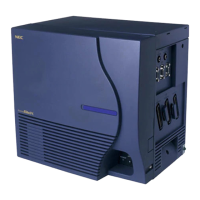Electra Elite IPK II Document Revision 4C
Automatic Call Distribution (ACD) 2 - 63
Automatic Call Distribution (ACD)
Description
Automatic Call Distribution (ACD) uniformly distributes calls among agents of a programmed ACD
Group. When a call rings into an ACD Group, the system automatically routes the call to the agent that
has been idle the longest. Automatic Call Distribution is much more sophisticated and comprehensive
than Department Calling and other group services – it can accurately judge the work load at each agent
and distribute calls accordingly. The system allows up to 64 ACD Groups and 256 ACD agents.
You can put any agent in any group. In addition, an agent can be in more than one group only when
using AICs. This allows, for example, a Technical Service representation to answer customer service
calls at lunch time when many of the Customer Service representatives are unavailable.
The ACD Master Number is the extension number of the whole group. Calls directly ringing or
transferred to the ACD Master number enter the group and are routed accordingly. Although the master
number can be any valid extension number, you should choose a number that is out of the normal
extension range.
Automatic Call Distribution operation is further enhanced by:
ACD Call Queuing
When all agents in an ACD Group are unavailable, an incoming call queues and causes the Queue
Status Display to occur on the ACD Group Supervisor’s display. The display helps the supervisor keep
track of the traffic load in their group.
Enhancements
In Version 1100 or higher, Delay Announcements using Analog Communications Interface (ACI) are
supported.
Version 1600 or higher:
ACD calls which overflow and are answered outside the original group are counted as overflowed calls in
the MIS software. Prior to this release, an overflowed call was counted as an Abandoned call.
A caller in ACD queue can dial out of a queue during a VRS delay announcement.
A remote K-CCIS user can call, or transfer a call directly to an ACD Pilot number. Prior to this release,
this type of call or transfer was not allowed.
Version 2000 or higher
Delay Announcements using In-Mail are supported and 1-Key dial out options are supported when using
VRS Delay Announcements.

